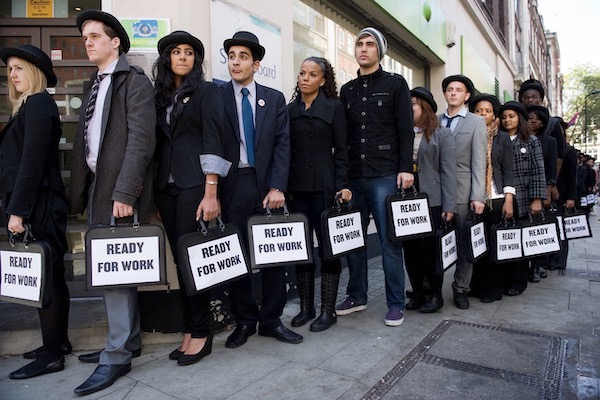Published on the 05/09/2023 | Written by Heather Wright

But where are the NZ roles?…
A government funded project to attract tech talent to New Zealand has started with a hiss and a roar, attracting 2,000 global IT applicants in its first month – but now it needs Kiwi companies to provide the roles for top talent.
The See Tomorrow First talent campaign, Recruitment Storyteller, launched to help address the shortage of high end, specialised, talent within the tech sector.
It includes a recruitment storyteller marketing toolkit companies can use in their own marketing to attract talent, an international marketing campaign and a centralised tech talent application portal, created by HainesAttract. Companies can use the HainesAttract platform, or take the marketing assets and feed recruitment through their own channels.
“New Zealand businesses wanted us to do this. Now it’s time to get behind it!”
David Downs, The New Zealand Story CEO, says within a month of launching, the international marketing campaign has had 20 million views of its ads, with half a million people visiting the campaign’s WorkHere platform, more than 200,000 click throughs to content and more than 2,000 applications from countries including Argentina, South Africa, the United States, India and the Philippines. That’s three-quarters of the number of applications targeted for the first year of the campaign, which has had around $200,000 pumped into it.
Downs acknowledges that some of those applications are likely from people who had already pre-registered interest, alongside those who have seen content for the first time through the campaign.
But Downs says there are two sides to the program.
“Internationally, is the message resonating with people? Yes, absolutely. In New Zealand can we get companies to sign up and use the assets and get on board? Yes, sort of,” he says.
“We have stirred up interest from other international markets of what we think are very well qualified people to come to New Zealand. Now we need to actually connect them to the real jobs and opportunities.
“Our problem is not a lack of interest from qualified candidates. It’s a lack of specific roles we need to be able to point people to.”
The current economic climate has left means many businesses might be short of talent, but concerns about the future are making them more tentative about hiring.
Gartner senior advisory director Neha Kumar recently told iStart that many New Zealand and Australian companies were reducing their reliance on hiring as a first step, and instead looking to do more with the teams they already have – including upskilling.
Downs, however, notes that the Recruitment Storyteller is very much focused on attracting the highly-experienced people currently not available in New Zealand.
“This is not meant to be the one and only way you should recruit. Number one is recruit out of New Zealand or build and train talent. This is only for roles where we are really struggling to find talent in country.”
There are around 10,000 open roles in the tech sector. Downs estimates around 10-20 percent of those could be filled internationally, but admits that’s ‘a pure guess’.
Seven companies are signed up looking for talent, including big names such as ASB, Air New Zealand and Silver Fern Farms, with the campaign now pushing to increase the number of actual job roles, versus generic role types, listed on the HainesAttract centralised recruitment platform.
While that number might seem low, Downs says the target for year one was 10.
Those seven companies are actively recruiting for 20-30 roles.
“It’s challenging times at the moment and economically difficult, but the companies that are going to be really successful in a couple of years time are doing the investment now – they’re building out their long-talent pipeline, investing in people, building the IP that they’re going to need,” Downs says.
“The challenge we’ve got is getting companies into the growth mindset at a point when they are probably feeling a bit worried about what the next two, three or six months might bring.
“But if you are recruiting or thinking about recruiting it will take six months so don’t wait. My concern is that companies are going to ground so much that they won’t just miss the opportunities that are here right now but they miss the stuff coming in a year, because they won’t have the talent on site.”
No figures are available yet for placements, but Downs says he’s hoping a ‘fairly significant portion’ will translate into roles in New Zealand.
The Fifa World Cup has undoubtedly been a driving force in bolstering the success of the campaign to date, and Downs says he’s hoping that will continue.
“Fifa was an amazing opportunity to get the mindshare of internationals. And there will be a cohort of those 20,000 people who came here as spectators who might now think New Zealand is an interesting place to potentially go and live, so there is a great opportunity to get even more value out of the World Cup.”
Of the talent who have applied, Downs says their skills are across the board, including data scientists, AI and machine learning specialists, product management and program managers.
The campaign has been designed in a way that enables it to be easily transferable to other industries and a construction offering went live a week ago.
“We know international recruitment is a long process – on average it takes six months.
“So while we’ve had a great number of initial applications, we understand conversion of these into job placements won’t be immediate.”
Despite Downs’ optimism, it’s clear he still wants local action now.
“New Zealand businesses wanted us to do this. Now we’re saying ‘we’ve done it, it’s working, now get behind it!”



























